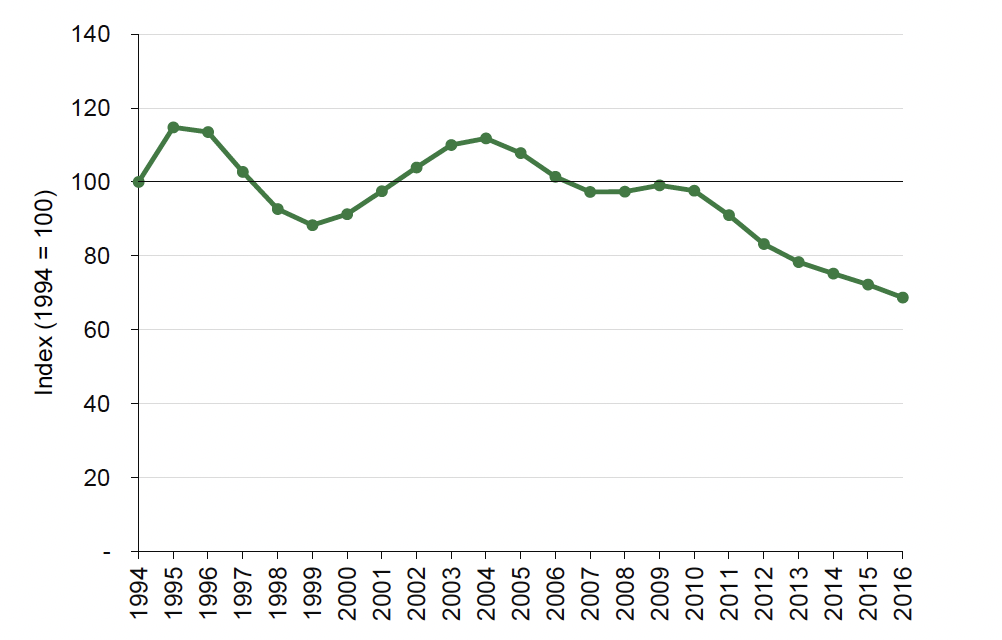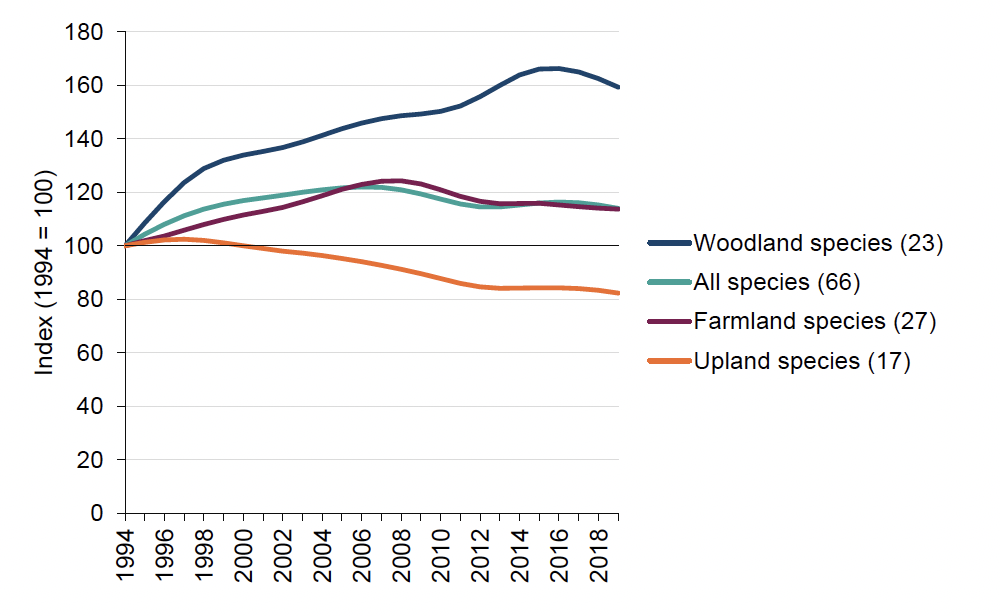Agriculture and Rural Communities (Scotland) Bill: supporting evidence and analysis
This report outlines the current position of the Scottish agricultural sector, with evidence aligned to the objectives in our Vision for Agriculture, and provides information on our approach to assessing new policy proposals as they are taken through secondary legislation.
2.5 Nature Restoration
Biodiversity is the variety of all living things and ecosystems. This web of relationships between inter-dependent organisms and the environment provides the benefits that people get from nature, such as food, medicines, fibre, and other natural materials. Simply put, we need biodiversity to survive.
Agriculture has a vital role to play in the health of terrestrial biodiversity and the services that it provides given that around 80% of Scotland’s land is agricultural. In some cases, historical agricultural activity has created the habitat that promotes some of the unique biodiversity that is found in Scotland (e.g. machair).
Declining biodiversity has been observed both globally and in Scotland for several decades
Declining biodiversity has been observed both globally and in Scotland for several decades. The latest State of Nature report for Scotland showed that the abundance of half of the species measured decreased between 1994 and 2016, with a 24% decrease in average species abundance over the same period, much of which has occurred since 2010 (illustrated by the terrestrial species abundance index in Figure 11 – note, the 1994 baseline represents a point in time where changes had already occurred so the results must be viewed in the context of an already depleted baseline). The distribution of species has also declined, with a 14% reduction in average distribution of the species measures since 1970.

The United Nations Intergovernmental Panel on Biodiversity and Ecosystem Services (IPBES) identified five direct drivers of biodiversity decline in its 2019 Global Assessment Report, these are:
- changing use of the land and sea especially for agriculture, forestry, fish farming and coastal infrastructure
- direct exploitation of organisms via harvesting, logging, hunting and fishing
- climate change
- pollution
- invasive non-native species
Agriculture is a contributing factor to all five drivers of biodiversity decline and given the extent of agricultural land in Scotland and it has undeniably played a key role in biodiversity decline across the country.In broad terms, the impacts of agriculture on biodiversity are largely a result of the historical move from low input-low output agricultural systems towards agricultural intensification. Increasing intensification, whether in arable or livestock systems, whilst boosting agricultural productivity, aligns with a greater control over natural processes, often at the detriment of nature. For example, in arable systems intensification has generally lead to the increased use of pesticides and fertilisers, continuous cropping, changed sowing seasons, and the loss of non-cropped habitats. In livestock systems it is linked to higher nutrient inputs into and out from improved grasslands, the greater use of veterinary medicines, and the removal and suppression of habitat. These practices impact on biodiversity both directly (e.g. direct loss of habitat from agricultural practices) and indirectly (e.g. increased nutrients in runoff causing eutrophication in aquatic ecosystems).
To address these impacts, agri-environment schemes and measures to improve targeted species and designated habitats have been put in place over the last couple of decades. There have been some successes, but on the whole results have been difficult to assess, all while set against a backdrop of continuing biodiversity decline at the national scale. The Scottish Terrestrial Breeding Birds indicator highlights the difficulty and complexity in understanding biodiversity impacts and improvements. Figure 12 shows that the overall picture for the indicator is a stable trend since 1994. However, breaking down the indicator into its constituent parts shows that upland birds have decreased, farmland birds have remained relatively stable and woodland birds have increased in abundance over this period. It is also important to note that many of these trends only start in recent decades, meaning their baseline is likely not a true reflection of an unimpacted state.

To address the biodiversity crisis the Scottish Government has published a new draft Biodiversity Strategy. The strategy sets out the vision that:
“By 2045, Scotland will have restored and regenerated biodiversity across our land, freshwater and seas. Our natural environment, our habitats, ecosystems and species, will be diverse, thriving, resilient and adapting to climate change. Regenerated biodiversity will drive a sustainable economy and support thriving communities, and people will play their part in the stewardship of nature for future generations”
To achieve this vision two milestones have been set:
- to be nature positive by 2030 (in line with the Leaders’ Pledge for Nature) and
- restored and regenerated biodiversity across the country by 2045
For agriculture to contribute towards meeting these milestones, the evidence suggests that a number of changes that address the drivers of biodiversity decline from agriculture are needed. These could include: a move to farming practices that promote high diversity, nature rich, high soil carbon, low intensity methods to address the direct impacts on biodiversity, all whilst sustaining high quality food production. There are also broader actions needed to increase the spatial extent of nature networks and improve overall ecosystem health and functioning so that ecosystems are connected and more resilient to other pressures (e.g. climate change).
Given the breadth of the nature restoration objective, we will develop a suite of indicators when assessing proposed policy changes, drawing on the information and issues highlighted in this section.
Contact
Email: richard.haw@gov.scot
There is a problem
Thanks for your feedback